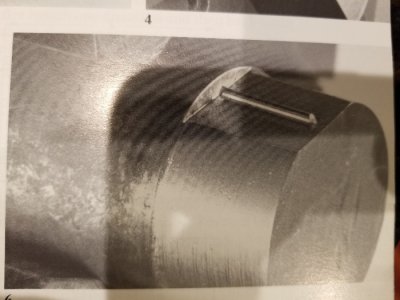- Joined
- Jun 15, 2017
- Messages
- 535
I found out a guy named Duclos made his own air spindle and wrote it up in Home Shop Machinist magazine, so I bought a back issue and looked at it. It looks like a surprisingly simple project, which suggests there are things about it I don't understand. The article appears in two issues, and I don't have the second part yet. Maybe that's where the fun starts.
As part of the process, he tells the reader to make a self-locking stub arbor. He gives no details at all, like every hobbyist is born knowing how to do this. I don't even know what a self-locking stub arbor is. I know what an arbor is, and I guess "stub" means it's short, but that's about it.
Can someone tell me what he's talking about? I'll upload a photo of a photo. Sorry about the quality.

As part of the process, he tells the reader to make a self-locking stub arbor. He gives no details at all, like every hobbyist is born knowing how to do this. I don't even know what a self-locking stub arbor is. I know what an arbor is, and I guess "stub" means it's short, but that's about it.
Can someone tell me what he's talking about? I'll upload a photo of a photo. Sorry about the quality.



